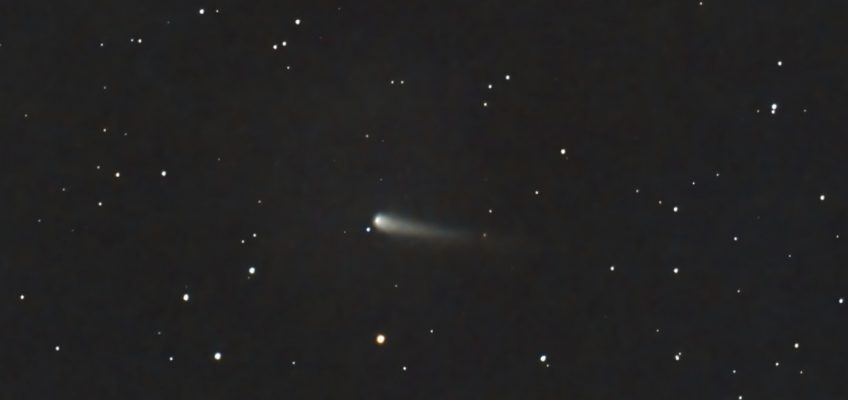I hope you’re enjoying the first official weekend of summer 2024.
This past Thursday evening, on summer solstice day, the sun reached its most northern position in our celestial dome in its very slow annual eastward migration among the stars. With the sun so far north in the sky now, it’s taking the longest, highest arc across our sky, providing us with the maximum amount of daylight, well over 15 hours. The sun has achieved a midday altitude of over 68 degrees above the southern horizon. Because of that, you’ll cast your shortest midday shadow of the year. The bad news I hate to share with you is that from now until the winter solstice in late December, daylight hours gradually decline…. Boo hiss!
Unfortunately for us diehard, determined stargazers, the longest days of the year translate to the shortest nights, making it really tough. It’s a late-night affair compounded with extended evening and morning twilights in our northern latitude. So summer stargazing requires an afternoon nap, at least for old star-geezers like me. This first week of summer is challenging because we have a full moon whitewashing the summer sky. It’s an official full moon this weekend, and it’ll stay nearly full into the first part of the coming week.
Many of us diehards keep telescopes in the barn during full moons. Don’t get me wrong. This time of year, the full moon rising in the southeastern sky is a thing to behold. One of my greatest pleasures during full summer moons is getting a campfire in my backyard and watching the moon climb above the horizon. I love to look for the face of the man on the moon, although my favorite is the poodle on the moon on the upper right half of the rising moon. Once you’ve spotted the lunar pooch, you’ll never forget it!
The poodle on the moon (Mike Lynch)
Full moons don’t rise very high in the sky this time of year. They take the same low arc across the southern sky as the sun does as winter begins. This makes sense because the sun and any full moon are on opposite sides of the sky. Around the summer solstice, the maximum height of the full moon in the midnight hour is the lowest of the year. Around here, it’s less than 30 degrees above the southern horizon. That makes your shadow from the midnight light of the full moon the longest of the year.
Switching gears, there’s a chance we could see a bright comet this October, but first, if you allow me, I need to get something off my chest. Over the years, and especially lately with the explosion of media sources and social media, I’ve seen so many examples of overhyped and exaggerated stargazing and astronomy news in my travels, some so bad I would go as far as calling it a hoax. A few weeks ago I even saw an article about how you could see a planet parade, including the planet Krypton. Another example would be exaggerating the “brilliance” of minor meteor showers. Folks see these stories and get all excited, bring the kids out in the middle of the night, and see absolutely nothing. This hurts the credibility of science and the hobby of stargazing.
There are also way overblown predictions of comets that “could be brighter than the brightest stars” and turn out to be nothing or near nothing! That’s why I want to be so careful telling you about Comet Tsuchinshan–ATLAS, discovered by the Asteroid Terrestrial-impact Last Alert System in South Africa last year. Comets are basically globs of ice embedded with dust and rock. They fly in from the cold outer edges of the solar system toward the inner planets along highly elongated orbits. As they get closer and closer to the sun, they at least partially melt, producing a tail of gas and another one made up of mostly dust and pebbles.
Comet Tsuchinshan-ATLAS (Mike Lynch)
Right now, Comet Tsuchinshan–ATLAS is just about 180 million miles from Earth. It’s crossing the orbit of Venus and heading toward the sun’s direction at over 2,200 mph. There’s no way you can see unless you have a really powerful telescope. Earlier this month I took a picture of it with astrophotography gear.
It’ll pass within 37 million miles of the sun in late September when the melting really gets going. From there, it’ll head back out toward the outer solar system, passing within 44 million miles of Earth on Oct. 12. That’s when it could be easily seen in the early evening sky with the naked eye, but that’s very far from guaranteed. Early forecasts from respected astronomers indicate it could be a really nice show (fingers crossed)…. Or it could be a dud. Stay tuned!
Mike Lynch is an amateur astronomer and retired broadcast meteorologist for WCCO Radio in Minneapolis/St. Paul. He is the author of “Stars: a Month by Month Tour of the Constellations,” published by Adventure Publications and available at bookstores and adventurepublications.net. Mike is available for private star parties. You can contact him at mikewlynch@comcast.net.
Related Articles
Skywatch: Happy summer solstice
Skywatch: Summer is coming — it’s in the stars
Skywatch: Late night with the stars in June
Skywatch: Little crown of night sky may pop a new star this summer
Skywatch: Arcturus is the great star of summer and on the rise … for now


Leave a Reply